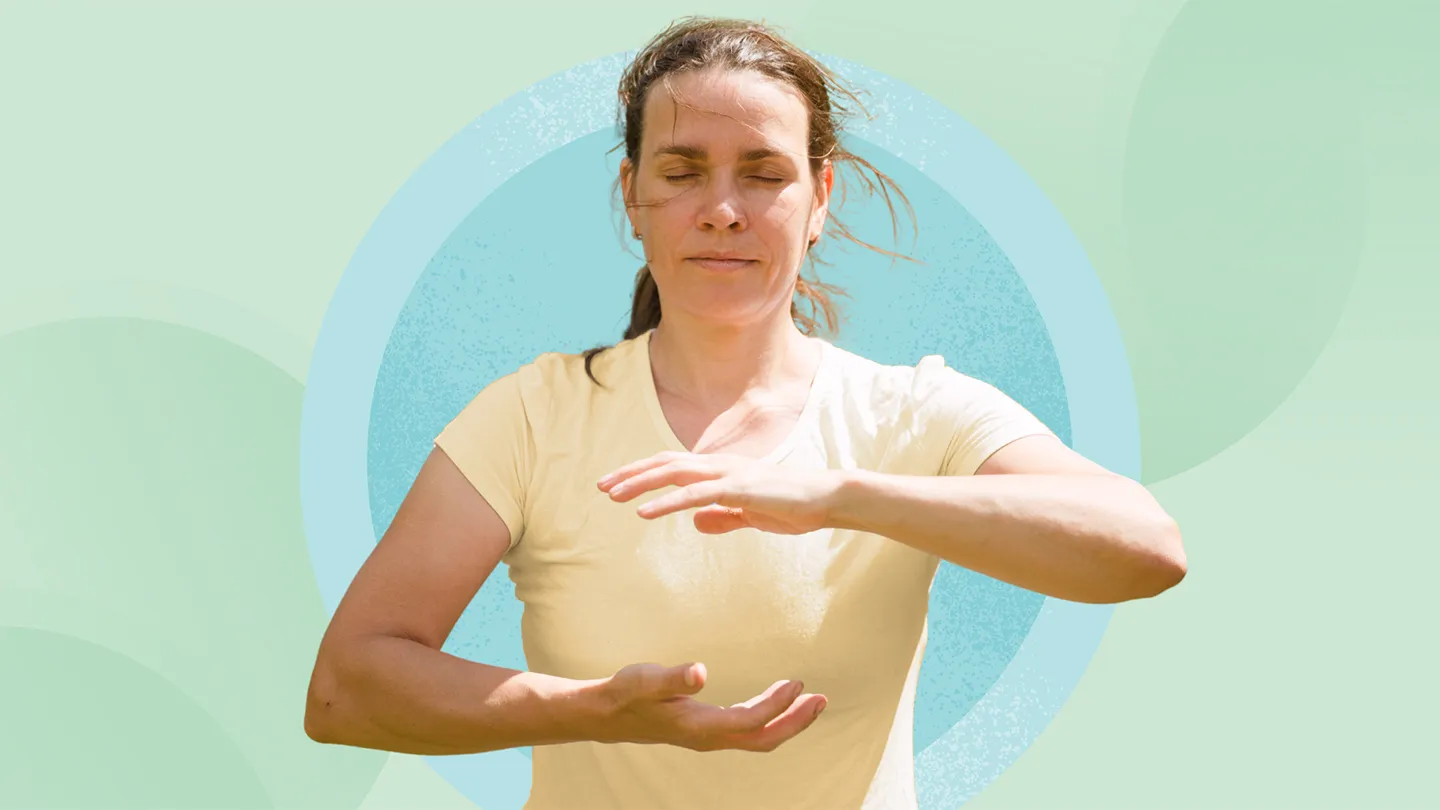Your first tai chi class may be a wonderful experience. All instructors have their own teaching style, but follow these general tips to remain comfortable in class.
Dress comfortably. Wear nonrestrictive clothing and footwear.
Introduce yourself. If you are coming to tai chi with health issues (for example, knee problems), let your teacher know before you begin class, so they can help you modify any movements.
Warm up. Each instructor will have their own warm-up. In Faulk’s classes, she instructs students to stand with their feet hip-width apart with knees soft and bent. Then she has students move from side to side to feel where they are, and asks them to visualize their legs as the trunk of a tree, rooted and grounded.
Go easy on yourself. You may be new to the movements, and that’s okay. “The two expectations I have for beginners are to try to keep your mind in the room as much as possible and pay attention to your body,” says Faulk. If you feel as if you’re uncoordinated, that’s okay, too. “The main thing is to be open and try to let go — and tai chi will help [most people] let go,” she says. This is your own practice; it’s not about perfection.
Take five, if necessary. If you want to sit and take a break, that’s okay, says Taylor-Piliae. There’s no reason to uncomfortably push yourself.
You may feel changed. After class, expect to feel … different. “It’s [generally, for most people] an unusual mix of feeling deeply relaxed and very awake, present, and invigorated,” says Wayne. Over time, with regular practice, these feelings can translate into a better overall mood.
You may want more. Wayne points out that tai chi can be a “gateway exercise” for some folks, as it improves their self-confidence in their body’s ability to handle challenges.
Set your schedule. Getting into a new exercise routine can be challenging, but the ideal amount of time to practice tai chi to begin to see the benefits is one hour, three times per week, for 12 weeks, says Taylor-Piliae, in her professional opinion. If that’s too ambitious, then aim for one hour twice a week for 16 weeks.
Take it home. If doing tai chi a few times a week is not yet doable, yet you want your skills to improve, you can practice at home. Take 10 minutes and put yourself in the hip-width position with your knees soft and the backs of your hands on your lower back and move forward and backward, suggests Faulk. Keep your chest lifted and body weight over the center of your feet. Do this three times per week. “It takes the pressure off to practice the movements at home, while allowing you to empty your head and mentally be there in the moment,” says Faulk.
Adjust your expectations. If you are new to exercise or have been more sedentary, you may see benefits from tai chi early on, says Taylor-Piliae. Alternatively, if you are already regularly active, it may take more time to experience these potential mind-body improvements.
Read the full article here




